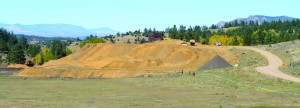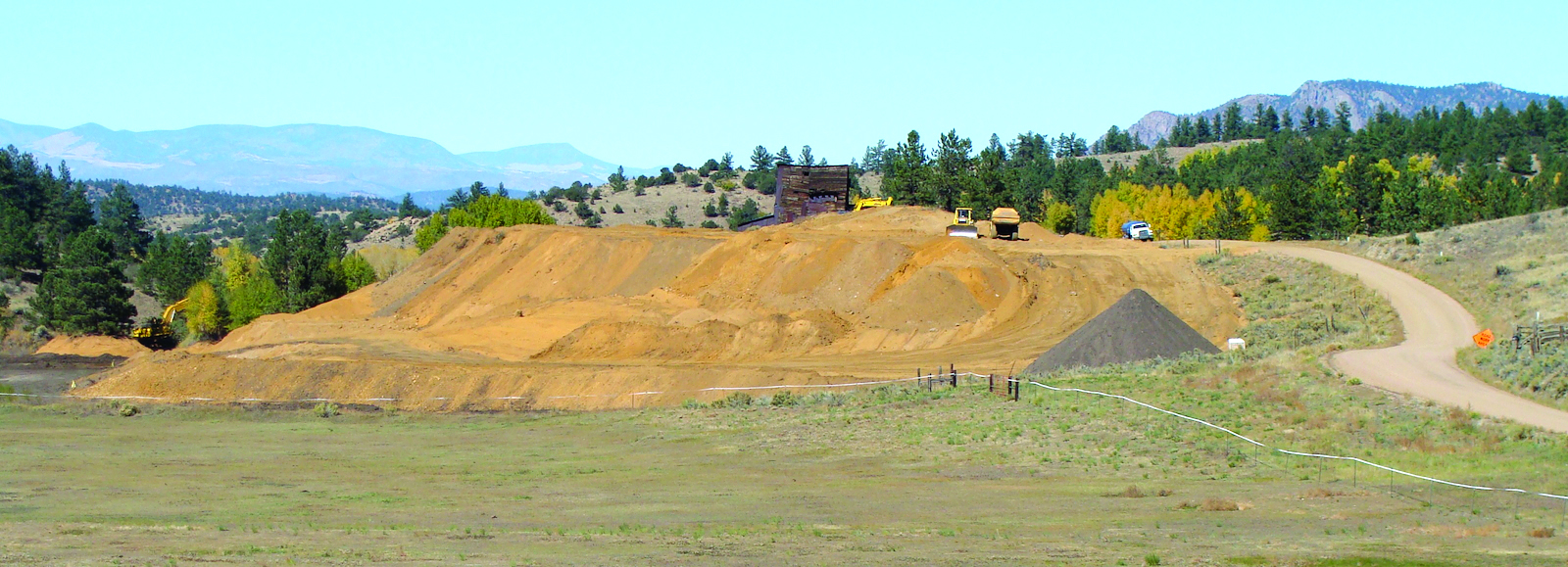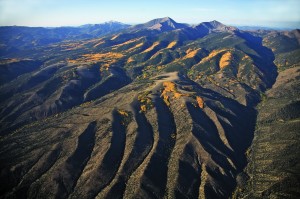By Hal Walter
Local historians say Ilse (pronounced “Ill-see” or “Ill-seh”) was a bustling little community in the late 1800s and early 1900s, with a number of area residents ranching, farming as well as working at the Terrible Mine, where lead was extracted and milled.
According to R.B. Brinsmade, a turn-of-the-century professor of mining engineering, the mine on the bank of Oak Creek produced about 250,000 tons of ore between 1880 and 1907. The lead was freighted out of the Wet Mountains by horse-drawn wagons.

When Brinsmade wrote about the Terrible Mine in the Engineering and Mining Journal in 1907, he was primarily interested in the presence of the mineral called cerussite, also known as “white lead” ore, more commonly known as lead carbonate. What most interested him is that the deposit at Ilse was not associated with sulfides or other minerals usually found along with lead.
“Some of the ore was smelted but most of it was oxidized directly to litharge (lead oxide) which was exceptionally high grade,” Brinsmade wrote.
Cerussite was commonly used in lead-based paints that were linked to lead poisoning in children and taken off the market. Earlier yet, it had been used in cosmetics, including the Venetian Ceruse worn by Queen Elizabeth I.
Also found in the Terrible Mine was the rare mineral phosgenite, or lead cholocarbonate. There are only a handful of known deposits in the entire world.
The Terrible Mine continued operating sporadically until the mid-1940s, according the U.S. Environmental Protection Agency. However, for decades afterward, Custer County used tailings from the mine to surface area roads.
Today Ilse is home to two families, one of them living in the mill building, and is flanked by an upscale development. But the Terrible Mine is once again bustling with activity as an EPA Superfund cleanup project.
According to Hays Griswold, EPA’s on-scene coordinator, the original company that owned the mine was a predecessor to the ASARCO mining company. In a 2009 bankruptcy settlement ASARCO agreed to pay $1.8 billion to clean up 80 sites in 19 states. Included in this package was $1.64 million for the Terrible Mine.
Griswold says the tailings left over from the Terrible Mine operation constitute a significant hazard, prompting an emergency response.
The 44-acre site includes a pit, mill, and tailings pile, which constitutes the chief environmental concern. The actual pit where the ore was extracted has formed a small lake over the years. According to Griswold, water in the pit has tested free of lead, as have residential wells at and near the site.
Basically the plan is to bury the tailings, some of which are known to contain very high lead levels, then cover them so they are no longer exposed to the elements.
The tailings comprise about 100,000 cubic yards of gravel. An existing depression large enough to hold the tailings was utilized to contain this material. Griswold says lead carbonate is chemically different from lead sulfide found in most mine cleanup situations, so there’s no concern about it leaching into the groundwater.
However, acidic runoff from the surrounding pine forests poses a potential problem. So the next step was to cover the tailings with a thick evaporative cap, including a drainage layer of coarse gravel, topsoil and vegetation. In all, this cap will be about three feet thick. The site will be shored up with boulder rip-rap to keep the soil in place and guard against flash floods from Oak Creek. Finally, the topsoil will be seeded with a native grass mix specified by the Soil Conservation District.
Local gravel contractor Andy Kagan is supplying most of the rock and topsoil for the project. About 70,000 tons will be needed to cover the tailings. Sales tax from the rock and soil will benefit Custer County.
Twelve employees of Environmental Restoration, the private company managing the project, are currently working at the site and staying in Cañon City. In addition, up to 19 semi-trailers and drivers from local trucking companies have been employed to haul rock and topsoil. Fuel for the project also is being purchased locally.
It’s difficult to guess what Prof. Brinsmade or early Ilse residents would think of the cleanup going on at the Terrible Mine. The amount of earth moved in this weeks-long project likely won’t approach the more than 250,000 tons of ore extracted in all the years of the mine’s operation. And when you consider that in 1907 top-grade lead ore sold for up to $62 a ton, it’s a safe bet the mining companies made a hefty profit even after paying for the cleanup decades later.
It all adds up to just another chapter in the unique history of the Ilse area and the Terrible Mine.



